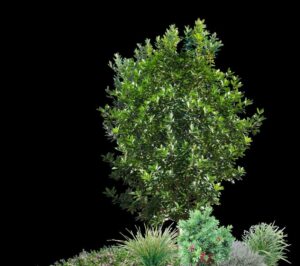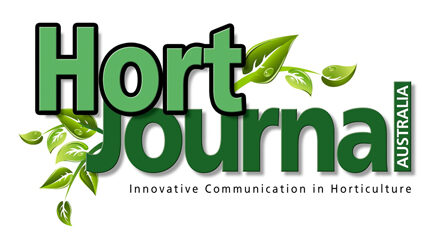
Plug-and-play plants for neglected sites
By Daniel Fuller
Mass planting beds are favourable from a nursery and plant breeder perspective because less diversity will often equate to larger profit margins, even though they can be risky by having “all your eggs in one basket.” They are also easy for specifiers to use in designs, because it takes less research to source a single variety of plant that tolerates site conditions and can be replicated throughout large beds. However, as education rises regarding the biodiversity crisis the world is facing, specifiers are increasingly looking to improve plant diversity.
This creates a challenge for specifiers without a deep horticultural knowledge base to successfully integrate plants with synergistic properties that can stand the test of time and meeting aesthetic requirements. Ideally, a horticulturist would be at the design table to guide specification lists in the right direction, however this is not always the case.
At Ozbreed we are excited about the upcoming golden age of mixed plantings where diversity is increased without sacrificing beauty or function. We have created a number of plug-and-play Australian native plant palettes that specifiers can use in common landscape scenarios.
Let’s explore our roadside palette.
Scaevola humilis ‘PFS200’ PBR Trade Name Pink Fusion™ is a sprawling groundcover that acts like a pollinator-attracting living mulch that flowers almost all year. It suppresses weeds by filling gaps between plants, and physically protects soil from rain droplets, direct sunlight and strong winds.
Lomandra longifolia ‘LM604’ PBR Intended Trade Name Tanika® is a strappy tuft with a strong root system that binds topsoil together, while physically tilling hard clays to help them accept rainwater. In humid climates, it can be substituted with Lomandra fluviatilis ‘ABU7’ PBR Trade Name Shara™.
Tristaniopsis laurina ‘DOW10’ PBR Trade Name Luscious® is a tough tree for roadsides requiring some screening or can be used as a wind break. Its roots work synergistically with lomandra to stabilise topsoil and subsoil, providing deeper and thicker roots to complement lomandra’s fibrous root mat.
Callistemon viminalis ‘LJ1’ PBR Trade Name Better John™ provides a shrub option where the line of sight must be preserved. While its roots aren’t as extensive as a taller tree, it still provides excellent erosion control and biodiversity support, without screening visibility.
Rhagodia spinescens ‘SAB01’ PBR Trade Name Aussie Flat Bush™ is a ground-covering shrub that is extremely drought-tolerant. Use this plant in spaces where rainwater struggles to accumulate, such as raised positions in heavy compacted clay. Substitute with Westringia fruticosa ‘WES05’ PBR Trade Name Mundi™ in humid climates.
Dianella caerulea ‘DCNCO’ PBR Trade Name Breeze® is another strappy plant with a fibrous root system to assist topsoil erosion control. Both lomandra and dianella foliage is a known food source for native butterfly larvae. It can be ‘chopped and dropped’ for an inexpensive, fungal-supporting, long-lasting mulch to decrease the maintenance spend on green waste removal and mulch input.
All our pre-designed palettes, including this roadside palette, can be found in our upcoming region-specific catalogues which we are sending to nurseries and specifiers around the country over the coming weeks. Initial feedback from specifiers has been overwhelmingly positive, as they love the simplicity of plug-and-play plant lists. Nursery business owners may see benefits in growing entire palette lists as specifiers are showing demand and will be exposed to the lists for years to come.
